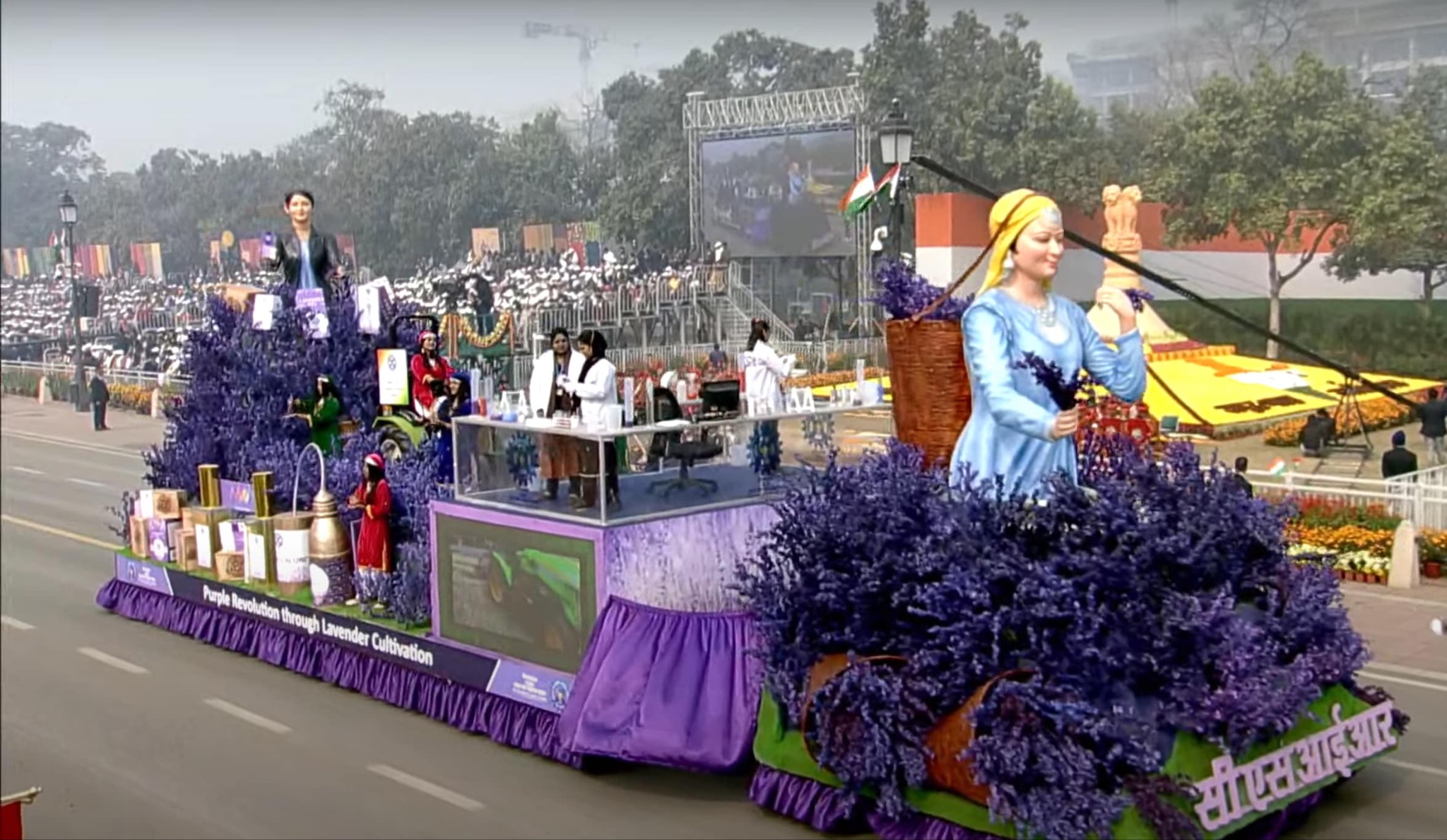AISHE report shows higher enrollment of women in higher education for 8 consecutive years (Indian Express)

- 27 Jan 2024
Why is it in the News?
In the last eight years, more women have enrolled in higher education compared to men, according to the 2021-22 All India Survey on Higher Education (AISHE) released recently.
Major Highlights of the AISHE Report 2021-22:
- The All India Survey on Higher Education (AISHE) for 2021–2022 has recently been released, and it highlights a notable change in enrolment trends.
- Women have enrolled in higher education at a higher rate than men during the last eight years, which is a significant step toward gender parity in academic fields.
Women Lead the Surge:
- According to the AISHE report, women now constitute 55 percent of the total increase in higher education enrollment, accounting for a staggering 91 lakh individuals since the academic year 2014-15.
- The latest statistics indicate that out of the overall enrollment of 4.33 crore, 48 percent, or 2.07 crore, are women—a marginal uptick from the 2.01 crore recorded in the previous academic year.
- The trend, characterized by a continuous surge in female enrollment since 2014-15, is particularly noteworthy.
- The report highlights an 18.7 percent increase in the enrollment of women from 2017-18 to 2021-22, showcasing a consistent upward trajectory.
Narrowing the Gender Gap:
- The gender gap in higher education is steadily narrowing, with the science stream standing out as a domain where women are making significant strides.
- Notably, 52.1 percent of the 57.18 lakh students enrolled in science at the undergraduate, postgraduate, MPhil, and PhD levels are women.
- The undergraduate level alone witnesses 51 percent of women in the science stream.
- However, disparities persist in certain disciplines, such as engineering and technology, where female enrollment lags significantly behind.
- The AISHE survey reveals that of the total students in undergraduate engineering programs, only 11.3 lakh are females, while 27.6 lakh are males.
- In addition to undergraduate programs, the report sheds light on postgraduate and PhD levels, showcasing a remarkable 61.2 percent of women in postgraduate science programs and a significant 62 percent representation in PhD programs in the sciences.
- State-wise Enrolment: The top 6 states in terms of student enrollment are Uttar Pradesh, Maharashtra, Tamil Nadu, Madhya Pradesh, West Bengal, and Rajasthan, constituting 53.3% of total enrollment.
- Number of Foreign Students: There are 46,878 foreign students enrolled in higher education, with the highest share from Nepal (28%).
- Teaching Staff in Higher Education: The total number of faculty/teachers in 2021-22 is 15.98 lakh, with about 56.6% male and 43.4% female, showing an increase of 46,618 teachers over 2020-21.
- This emerging trend is not only indicative of changing societal dynamics but also underlines the need for continued efforts to foster inclusivity and equal opportunities within the realm of higher education.
- The report serves as a testament to the progress made while emphasizing the areas that still require attention and intervention.
About the All India Survey on Higher Education (AISHE) Report:
- The All India Survey on Higher Education serves as the primary source of comprehensive data regarding the state of higher education in India.
- Published by the Ministry of Education, this survey has been ongoing since 2011, covering all higher educational institutions across the country.
- It gathers detailed information on various aspects including student enrollment, faculty data, infrastructure, and finances.
- The report relies on voluntary data submission by higher education institutions listed on the aishe.gov.in portal, with the accuracy of the data overseen by the respective institution's Nodal Officers.
What are incestuous ‘sapinda’ marriages, and why has the Delhi High Court reaffirmed the ban on them? (Indian Express)

- 27 Jan 2024
Why is it in the News?
Delhi High Court this week rejected a challenge to the constitutionality of Section 5(v) of the Hindu Marriage Act, 1955 (HMA), which prohibits marriage between two Hindus if they are “sapindas” of each other — “unless the custom or usage governing each of them permits of a marriage between the two”.
What was the Case?
- In 2007, the marriage of a woman was declared void after her husband proved it was a sapinda marriage and she did not come from a community where such marriages were customary.
- This decision was challenged in the Delhi High Court, which dismissed the appeal in October 2023.
- The woman then petitioned the High Court again, challenging the legality of the sapinda marriage ban.
- She claimed that sapinda marriages take place even when there is no evidence of custom.
- As a result, Section 5(v), which prohibits sapinda marriages unless an established custom exists, violates the right to equality guaranteed by Article 14 of the Constitution.
- The petitioner also claimed the marriage had received the consent of both families, demonstrating its legitimacy.
What are Sapinda Marriages?
- A sapinda marriage is one between two people who are related to each other to some extent.
- According to Section 3(f)(ii), “Two persons are said to be sapindas of each other if one is a lineal ascendant of the other within the limits of sapinda relationship, or if they have a common lineal ascendant who is within the limits of sapinda relationship with reference to each of them.”
- According to the Hindu Marriage Act (HMA), on the mother's side, a Hindu person cannot marry anyone within three generations of them in the "line of ascent".
- On the father's side, this prohibition applies to anyone within five generations of the individual.
- This means that on their mother's side, a person cannot marry their sibling (first generation), parents (second generation), grandparents (third generation), or anyone else who shares this ancestry within the three generations.
- On their father's side, this prohibition would apply to their grandparents' grandparents as well as anyone within five generations of this ancestry.
Exceptions to the Prohibition Against Sapinda Marriages?
- The only exception can be found within the same provision.
- An exception arises when the customs of the individuals involved permit sapinda marriages.
- The term "custom" is defined in Section 3(a) of the HMA.
- According to this section, a custom must have been consistently and uniformly practised for an extended period and must have gained sufficient recognition among Hindus in a specific locality, community, or family to be deemed legally binding.
Are Marriages Similar to Sapinda Marriages Allowed in Other Countries?
- In several European countries, the laws on relationships that are considered incestuous are less stringent than in India.
- In France, the crime of incest was abolished under the Penal Code of 1810, so long as the marriage was between consenting adults.
- Portuguese law also does not criminalise incest.
- Under Italian law, incest is a crime only if it causes a “public scandal”.
- In the United States, incestuous marriages are banned in all 50 states, though incestuous relationships between consenting adults are allowed in New Jersey and Rhode Island.
CSIR’s Republic Day Tableau highlights the Purple Revolution through Lavender Cultivation in Jammu & Kashmir (PIB)

- 27 Jan 2024
Why is it in the News?
The Council of Scientific & Industrial Research's Republic Day Tableau highlighted the unleashing of a Purple Revolution ushered through Lavender cultivation in Jammu & Kashmir.
What is the Purple Revolution?
- The Purple Revolution or Lavender Revolution, launched by the Ministry of Science & Technology, aims to promote the indigenous aromatic crop-based agro-economy through the ‘aroma mission’ of the Council of Scientific and Industrial Research (CSIR).
- The mission aims to increase the income of the farmers and promote lavender cultivation on a commercial scale.
- Lavender oil, which sells for, at least, Rs. 10,000 per litre, is the main commodity.
- Other popular products include medicines, incense sticks, soaps, and air fresheners.
- The cultivation of lavender is very cost-effective as it yields revenue immediately.
- Jammu and Kashmir’s climatic conditions are conducive to lavender cultivation since the aromatic plant can withstand both chilly winters and pleasant summers.
- Additionally, it is a low-maintenance crop, which can be used from its second year of plantation and blossoms for fifteen years.
- In its entirety, lavender production gives better returns when compared to other traditional crops.
- Under the One District One Product-Districts as Export Hubs (ODOP-DEH) initiative, lavender cultivation in Jammu and Kashmir has experienced a significant boom.
- Lavender has been designated by the central government as a "Doda brand product" to promote the rare aromatic plant and boost the morale of farmers, entrepreneurs, and agribusinesses involved in its cultivation as part of this Aroma Mission.
- The Aroma Mission through the Purple Revolution aims to bring about a revolutionary change in the fragrance industry, consequently promoting the expansion of the aroma sector and generating rural employment, through targeted interventions during cultivation, product refinement, market development and curating an expansion strategy for the lavender crop.
About Aroma Mission:
- The Aroma Mission, launched in 2016, aims to enhance the cultivation of plants like lavender, Aloe Vera, Mehndi, Menthol, and Mint, known for their aromatic and medicinal properties.
- Developed by the Council of Scientific & Industrial Research (CSIR), this mission employs new technologies.
- It seeks to revolutionize the aroma sector by improving agricultural practices, processing methods, and product development.
- Additionally, it provides technical and infrastructure support to farmers and growers nationwide, ensuring fair prices through buy-back mechanisms.
- The mission targets to expand cultivation by 30,000 hectares and catalyze aromatic crop cultivation in 60,000 hectares overall.
- This expansion is expected to yield an extra 700 tonnes of essential oils used in perfumery, cosmetics, and pharmaceuticals, creating a business worth at least 200 crores.
Interim Budget 2024: Exporters seek higher allocation for MAI scheme (Business Standard)

- 27 Jan 2024
Why is it in the News?
Ahead of the interim Budget 2024, exporters have urged the government to allocate funds worth $3.88 billion for the Market Access Initiative (MAI) scheme to promote Indian exports and help them hit the ambitious $2 trillion target by 2030.
What is the Market Access Initiatives (MAI) Scheme?
- The Market Access Initiative (MAI) Scheme is an Export Promotion Scheme envisaged to act as a catalyst to promote India’s exports on a sustained basis.
- The scheme is formulated on a focus product-focus country approach to evolve specific markets and specific products through market studies/surveys.
- Assistance would be provided to Export Promotion Organizations/Trade Promotion Organizations/National Level Institutions/ Research Institutions/Universities/Laboratories, Exporters etc., for enhancement of exports through accessing new markets or through increasing the share in the existing markets.
- Under the Scheme, the level of assistance for each eligible activity has been fixed.
- The following activities will be eligible for financial assistance under the Scheme:
- Marketing Projects Abroad
- Capacity Building
- Support for Statutory Compliances
- Studies
- Project Development
- Developing Foreign Trade Facilitation Web Portal
- To support Cottage and handicraft units
How does the MAI Scheme work?
- The scheme’s primary goal is to facilitate export growth by enabling entities to enter new markets or enhance their presence in existing markets.
- To accomplish this, the scheme provides predetermined levels of assistance for each eligible activity.
- By directing attention to key products and specific markets, the MAI Scheme serves as a catalyst for driving India’s export expansion in a sustainable and strategic manner.
Who is eligible to receive assistance under the MAI Scheme?
- Various entities are eligible to receive financial assistance under the MAI Scheme, including:
- Export promotion organizations
- Trade promotion organizations
- National level institutions
- Research institutions
- Universities
- Laboratories
- Individual exporters
- Start-ups
Who administers the MAI Scheme?
- The MAI Scheme is administered by the Ministry of Commerce and Industry, Government of India, through the Directorate General of Foreign Trade (DGFT).
Rare Golden Tiger takes a stroll in Assam’s Kaziranga National Park, video stuns people (HT)

- 27 Jan 2024
Why is it in the News?
A rare golden tiger was recently spotted in Kaziranga National Park taking a stroll and is the only known golden big cat in India.
What is a Golden Tiger?
- A Golden Tiger, also called a Golden Tabby Tiger, is a Bengal tiger with a unique colour variation caused by a recessive gene.
- The tiger looks golden because it has a mutation or a genetic variant.
- Basically, tigers have three colours: black, orange and white.
- In the Golden Tiger, the black colour is missing and it is slightly faded.
- The golden colouring of these tigers comes from a recessive trait called 'wideband,' affecting how black pigments are produced during hair growth.
- Golden tigers are not a distinct subspecies but rather a product of genetic diversity among Bengal tigers.
- They are extremely rare in the wild and even more so in captivity.
About Kaziranga National Park:
- Kaziranga National Park lies partly in the Golaghat District and partly in the Nagaon District of Assam.
- It is the oldest park in Assam and covers an area of 430 sq km along the river Brahmaputra on the North and the Karbi Anglong hills on the South.
- The National Highway 37 passes through the park area and tea estates, hemmed by table-top tea bushes.
- Kaziranga National Park a world heritage site is famous for the Great Indian one-horned rhinoceros, the landscape of Kaziranga is of sheer forest, tall elephant grass, rugged reeds, marshes & shallow pools.
- It was declared a National Park in 1974.
- It is one of the last areas in eastern India undisturbed by a human presence.
- It is inhabited by the world's largest population of one-horned rhinoceroses, as well as many mammals, including tigers, elephants, panthers and bears, and thousands of birds.
- Vegetation: Due to the difference in altitude between the eastern and western areas of the park, mainly four main types of vegetation’ like alluvial inundated grasslands, alluvial savanna woodlands, tropical moist mixed deciduous forests, and tropical semi-evergreen forests.
- Flora: Kumbhi, Indian gooseberry, cotton tree, and elephant Apple are among the famous trees that can be seen in the park.
- Fauna: The forest region of Kaziranga Park is home to the world’s largest population of Indian Rhinoceros.
- Other animals that can be seen in the elephant grass, marshland and dense tropical moist broadleaf forests of Kaziranga are Hoolock Gibbon, Tiger, Leopard, Indian Elephant, Sloth Bear, Wild water buffalo, swamp deer, etc.
- Also in this park the good number of migratory bird species from Central Asia.
- With the increase in tiger population every year, the government authorities declared Kaziranga a Tiger Reserve in the year 2006.
